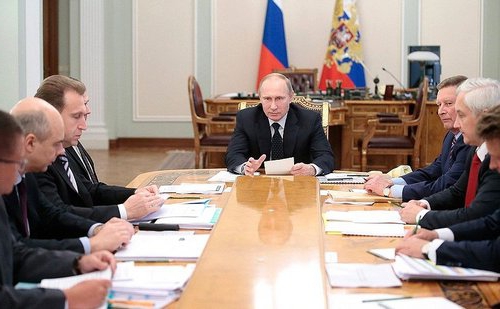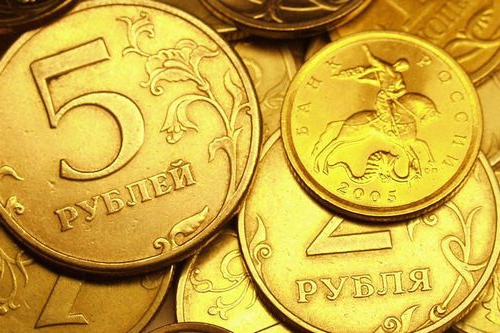The funds of the National Welfare Fund are part of the federal budget subject to separate accounting. They are aimed at ensuring co-financing of pension (voluntary) savings of the population. They also contribute to maintaining budget balance FIU. Next, we will analyze the National Welfare Fund. 
General information
The financial institution in question was established on February 1, 2008 after the existing budget stabilization structure was divided into the Reserve Fund and the National Welfare Fund of the Russian Federation. The NWF exists at the expense of oil and gas profits from the federal budget. Since 2008, they are accounted for separately from other income. In addition, the formation of the National Welfare Fund is carried out at the expense of profit derived from the turnover of its finances.
Oil and gas revenues
The National Welfare Fund of Russia receives profit from:
- Mineral extraction taxes presented as hydrocarbons. In particular, it includes combustible natural gas and gas condensate, oil from all types of fields.
- Customs export duties on raw materials and products of its processing.
Some of the above revenues in the form of an oil and gas transfer are allocated annually to finance the costs of the federal budget. The size of revenues is established by the corresponding Federal Law for the planning period and the next year. The transfer volume is reflected as a percentage of the projected GDP:
- In 2008 - 6.1.
- In 2009 - 5.5.
- In 2010 - 4.5.
- In 2011 and beyond, 3.7.
After reaching the full amount of the transfer, the proceeds are sent to the Reserve Fund and the National Welfare Fund. The normative value of the first is established by the Federal Law on the federal budget for the planned period and the forthcoming fiscal year in absolute terms. It is determined on the basis of the predicted ten percent GDP for the corresponding period. The Reserve Fund and the National Welfare Fund are replenished sequentially. First, the normative size of the first is achieved, and then injections into the NWF are carried out. 
Accounting
Oil and gas revenues flowing to the National Welfare Fund of Russia are recorded on separate budget accounts. They are opened in the Central Bank by the Federal Treasury. Transfers and calculations regarding the creation and use of oil and gas revenues are carried out by the Ministry of Finance. The procedure for performing these operations is established by the Government.
National Wealth Fund Management
Revenues from this activity serve as another financial source. The objectives of administration are to ensure the safety and a stable level of profit from accommodation in the long term. The management of the Fund allows the probability of obtaining a negative financial result in the short term. Administration is carried out by the Ministry of Finance in the manner prescribed at the government level. Separate powers in this activity belong to the Central Bank. When attracting specialized financial companies to perform certain functions related to the management of the Fund, this process, as well as the requirements for entities, are established by the Government of the country.
Administration Methods
The resources that make up the Russian National Wealth Fund are controlled and coordinated as follows:
- By purchasing foreign currency on them (pounds sterling, euros, US dollars) and placing it on the accounts of the National Wealth Fund in the Central Bank.Using the funds of the National Wealth Fund involves the calculation of interest established in the agreement with the Central Bank.
- By placing finances in assets and foreign currency denominated in rubles and permitted foreign currency.

The Ministry of Finance coordinates and uses the National Welfare Fund according to the first method. Placement of finances on the currency accounts of the Central Bank is carried out in accordance with the procedure for calculating and crediting interest established on the accounts approved by the Ministry of Finance. The Bank makes payments on balances equivalent to the profitability of the indices. The latter are formed from assets intended for placement of finances that make up the National Welfare Fund. The government has established maximum shares of permitted assets in the total value of the SWF. To improve coordination, the Ministry of Finance is authorized to set normative indicators within the limits approved at the Federal level.
Asset requirements
The finances constituting the volume of the National Wealth Fund may be invested in debt instruments as securities of foreign states, foreign agencies and central banks of such countries as:
- Sweden.
- France.
- Finland.
- USA.
- Netherlands.
- Luxembourg.
- Canada.
- Spain.
- Ireland.
- Denmark.
- Germany.
- Great Britain.
- Belgium.
- Austria.

For debt obligations the following requirements are established:
- Foreign issuers must have a long-term credit rating of not less than “AA-”, in accordance with the classification of Standard & Purs or Fitch Ratings, or not less than “Aa3” by Moody Investor Service. If a subject is assigned different positions, then the smallest of them is considered indicative.
- The rating of Russian issuers should not be less than the level of “BBB-” or “Baa3” according to the classifications of the above agencies, respectively. If different positions are assigned to an entity, then the smallest of them will also be considered indicative.
- The periods during which debt obligations must be repaid are fixed. The terms of circulation and issue do not imply the issuer's right to make early repurchase.
- The standards for the maximum and minimum maturities established by the Ministry of Finance are considered mandatory.
- The coupon yield rate that is paid on the respective debts, as well as the face values, are fixed.
- The volume of the issue of obligations that are in circulation is not less than 1 billion rubles, 1 billion dollars, 1 billion euros and 0.5 billion pounds for relevant accounts.
- The face value is fixed. It is expressed in euros, dollars, rubles or f. sterling. Payments are made in face value currency.
Subjects
The international financial organizations, in the obligations of which the assets comprising the National Welfare Fund can be placed, are the following banks:
- Asian (ABD).
- Development in CE.
- European investment.
- Inter-American (IADB).
- European (reconstruction and development).
- Northern Investment.
- International (reconstruction and development).
The entities also include the International Finance Corporation (IFC). 
Securities Requirements
Legal entity shares and interests (shares) investment funds in which the NWF funds can be placed must meet certain conditions. In particular:
- Securities of organizations must be present in the quotation list of at least one exchange.
- For shares of foreign issuers, entry into the lists used in calculating the RTS and MICEX indices is necessary.
- The composition of the funds of investment funds that issue participatory interests should contain only permitted assets.
Deposit placement
For its implementation, the following conditions must be met:
- A credit company or a bank should be in the long-term credit rating of positions no lower than “AA-” according to the classification of Standard & Purs or Fitch Ratings or Aa3 agencies according to the list of Mudis Investor Service. If the organization is at different levels on these systems, then the smallest is considered indicative.
- The standards for the maximum and minimum term for the placement of assets forming the National Welfare Fund, approved by the Ministry of Finance, are mandatory.
Accommodation at Vnesheconombank State Corporation
For referral to deposits, the following requirements must be observed:
1. Allowed placement in Russian and foreign permitted currency (dollars, pounds sterling, euros).
2. The maximum allowable total amount under which assets can be held on deposits in rubles is 655 billion rubles. Wherein:
- funds in the amount of up to 175 billion can be placed on accounts, terms, amounts and other essential conditions for which are established by the Ministry of Finance;
- up to 410 billion may be held on deposits in the manner approved by the Government, subject to the following conditions:
a) at a rate of 7% until December 31, 2019 (inclusive);
b) at the rate of 8.5% until December 31. 2010 (inclusive). 
- assets in the amount of up to 30 billion can be placed at the rate of 8.5% until 12/31/2017 in the manner prescribed by the Government;
- interest payments throughout the entire period are made quarterly;
- the possibility of early repayment of funds is allowed by agreement of Vnesheconombank; interest is paid for the actual period of finding finances on deposit.
3. The terms and amounts of placement are determined by the Ministry of Finance in accordance with the specified requirements; the transfer is made by the Federal Treasury, according to the decision of the Finance Ministry.
Important point
The assets that make up the National Welfare Fund can be directed exclusively to co-financing pension savings of a voluntary nature and covering the deficit (ensuring balance) of the PFR budget. The distribution procedure is established by the corresponding Federal Law No. 56. This Law regulates insurance (additional) contributions to the funded share of the working pension and state support for the formation of savings. The volume of the National Welfare Fund - the amount of assets allocated for the above purposes - establishes the Federal Law on the Fed. budget for the planning period and reporting year according to BC.
Operations reporting
The Ministry of Finance publishes monthly information regarding the receipt and use of available oil and gas revenues, the value of the NWF assets at the beginning of the month. The documents also provide information on crediting finance, placement and subsequent distribution in the reporting period. The Ministry of Finance also provides annual and quarterly reports on the receipt and use of oil and gas revenues received, education and turnover of assets of the National Fund. Well-being. This information is included in the acts on the results of the implementation of the articles of the federal budget. In addition, the Ministry of Finance provides an annual and quarterly report on the management of funds included in the Fund. The government of the country, as part of acts on the results of the implementation of the articles of the federal budget, submits to the State Duma the Federal Assembly and the Council of Federations information on the revenues and use of the oil and gas profits, creation and circulation of the assets of the National Wealth Fund, as well as on the coordination of their distribution. Reporting is provided once a year and quarterly. 
Audit of operations
In the process of implementing the adopted and approved articles of the federal budget, control measures are carried out. The Accounts Chamber is authorized to carry them out. Control is aimed at checking the creation, turnover, and asset management that make up the NB Fund.The Accounts Chamber submits to the Federal Assembly an operational quarterly report. It presents the results of the execution of budget items containing information on income generation and expenses incurred, including, but not limited to, data on replenishment, turnover and management of the NB Fund.
Reserve fund
It is a financial institution whose assets are put into circulation to stabilize the budget during a decline in income or for government needs in the long term. In addition to economic functions, the Reserve Fund also performs political tasks. In particular, the presence of such assets prevents a rapid increase. government spending. As a rule, such costs cannot be quickly reduced immediately after a drop in income. In unfavorable periods, such a situation can provoke a budget deficit, non-fulfillment of social obligations, and default. The reserve background acts as a macroeconomic tool to maintain the level of aggregate demand and long-term economic growth. The state restrains consumption during periods of rapid progress. This is necessary to reduce inflation. At the same time, with a fall in consumer activity, the state (during periods of stagnation) stimulates demand. In such years, the government may spend more than it receives taxes. This increases the total national expenditure, allows companies not to reduce production rates, not to reduce workers. With inflation, the state reduces costs to prevent price increases. The difference in expenses and revenues of the total budget may be directed to the Reserve Fund.
Main functions
The reserve fund is a separate part of the finances of budgets of all levels, which has received the form of target assets. They are designed to ensure uninterrupted provision of costs both previously provided and unforeseen, which arise suddenly and have a random or emergency character. The funds that make up the Reserve Fund may be spent on emergency response activities related to the elimination of the consequences of technological disasters, natural disasters and other emergencies that occurred in the current financial period. This structure implements two main functions:
- Assets may be spent to cover the deficit of state budget items in the face of unfavorable conditions.
- During periods of high prices for raw materials, the Fund’s funds help accumulate excess export earnings and prevent the development of the Dutch economic disease.
The procedure in accordance with which assets are included in the turnover is established by regulatory acts of the Government. Additional clarifications on the requirements for the expenditure of reserve funds may be provided for by orders of executive bodies of entities or local self-government. The amount of accumulated assets cannot exceed 3% of the approved budget expenditures at the federal level.
